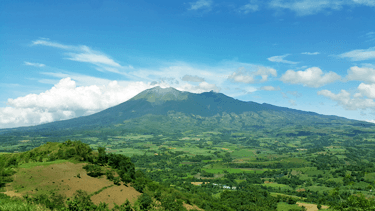Phivolcs detects spike in earthquake activity at Kanlaon Volcano

The Philippine Institute of Volcanology and Seismology (Phivolcs) reported 64 volcano-tectonic earthquakes at Kanlaon Volcano since midnight on Thursday, Oct. 31.
These earthquakes, ranging from magnitude 0.9 to 2.9 and occurring at depths of 2 to 8 kilometers beneath the southwestern flanks, are indicative of rock fracturing processes, Phivolcs said.
It explained that the increase in seismic activity is triggered by a progressive rock fracturing beneath the volcano as rising magma moves toward the surface.
On Wednesday, Oct. 30, 20 volcano-tectonic earthquakes were recorded.
Phivolcs also noted that sulfur dioxide (SO2) emissions from the summit crater of Kanlaon Volcano reached 7,087 tons.
Kanlaon Volcano has been showing elevated SO2 levels, with an average of 1,273 tons daily before the eruption on June 3, it added.
Since then, emissions have increased significantly, averaging 4,234 tons per day.
Alert level 2 maintained
Phivolcs has maintained Alert Level 2 (increasing unrest) at Kanlaon Volcano, as the current volcanic activity could lead to eruptive unrest and a potential increase in alert level.
Residents are strongly advised to remain vigilant and avoid entering the four-kilometer permanent danger zone to minimize risks from volcanic hazards, pyroclastic density currents, ballistic projectiles, and rockfalls.
In the event of ash fall, communities downwind should cover their noses and mouths with a damp, clean cloth or dust mask.
In addition, civil aviation authorities are urged to prevent pilots from flying near the volcano’s summit, as ash and debris from sudden eruptions pose serious risks to aircraft.
Communities along river systems on the southern and western slopes, particularly those affected by lahars and muddy streamflows, should take precautions when heavy rainfall is forecast or underway.